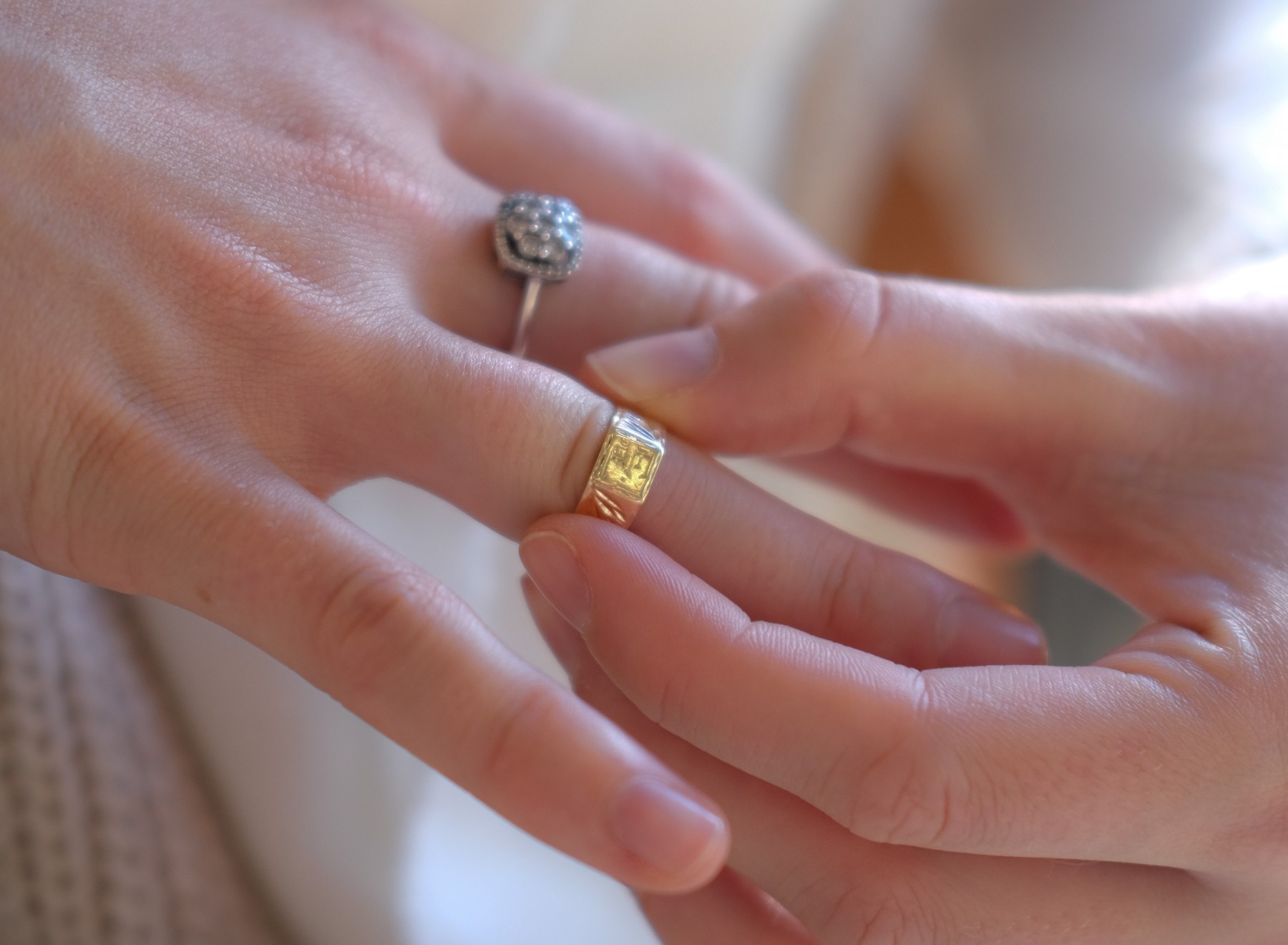Jewellery Packaging Boxes - the most common tarnishing accelerants of jewellery articles
Article written by: Dippal Manchanda, MSc CSci CChem FRSC, Technical Director & Chief Assayer Birmingham Assay Office, UK
/Tarnishing-Article-Jewellery-packaging-Material-01022023-FINAL.jpg)
One of the most common uses of Precious Metals is in alloys for jewellery manufacture, and in this line of business, satisfying the final consumer is hugely important. The main reason for buying jewellery is its aesthetic value, which diminishes significantly when the metal succumbs to tarnishing, altering the colour, brightness and pleasing appearance. While corrosion is not a problem for pure, noble metals, tarnishing can be a big problem with precious metal alloys, particularly for sterling silver and low-carat gold.
Jewellers have been seeking advice from independent experts at The Birmingham Assay Office for decades. The Laboratory has developed tests to determine susceptibility to tarnishing, and its most recent research has produced exciting and helpful findings, particularly about packaging materials.
What causes tarnishing?
Tarnishing of silver, typically a blue/purple/black colour, is triggered by its reaction with elements such as sulphur, moisture, oxygen and chlorides. These elements, which are responsible for accelerating tarnishing, are abundant in the environment. Silver reacts with sulphur-containing gases in the atmosphere to create Silver Sulphide, which appears as a visible black residue on the surface of the metal.
Oxygen and Sulphur compounds in the atmosphere, such as sulphur dioxide, hydrogen sulphide gases and organic vapours, all contribute to the tarnishing process, which is also accelerated by other factors. Common causes of deterioration are perspiration, which is essentially rich in sodium chloride (common salt), perfume and deodorant sprays. Some foodstuffs such as fruit juice, pickles, onions and garlic release high levels of acid and sulphurous compounds.
In addition to these naturally occurring accelerants, jewellery manufacturers may inadvertently contribute to tarnishing. Leaching of acid or cleaning solutions from the surface microporosity of cast jewellery causes associated corrosion and may even trap perspiration during wear, causing local corrosion. Organic sulphur-containing compounds in storage box materials, particularly adhesives, are another well-known source that can cause severe tarnishing.
How can tarnishing be prevented?
Tarnishing of silver-plated articles cannot be prevented completely; elements such as sulphur, moisture, oxygen and chlorides that accelerate tarnishing are ever-present and, in time, low-carat gold and silver, silver-plated jewellery will eventually tarnish. However, some measures can be taken to delay the inevitable.
To slow the onset of the tarnishing process, some metallurgical interventions include the addition of de-oxidising metals such as germanium or silicon to the alloy mix. However, the jewellery alloy or composition only plays a relatively small part; in that it determines the speed at which tarnishing occurs but cannot prevent it unless all the Oxidising metals are removed from the alloy. Similarly, the onset of tarnishing can also be delayed by specialised processes such as e-coat, lacquer, ‘chromate conversion treatment’ and other treatments whereby a coating is applied to metallic surfaces. This ensures that no further oxidation occurs and no tarnishing can commence.
Most treatments applied to increase tarnish resistance can lead to other undesirable properties in jewellery items. Repairs, and additional work, i.e. sizing etc., can become extremely difficult or even impossible when such alloy additions are made that make the alloy too hard, or brittle etc., and all surface coatings will be removed by polishing if the wearer requires scratches to be removed. Applying some of these protective coatings involves complex multi-stage processes, and a jewellery repair shop may not be able to reapply the same coating. Also, re-melting and recasting these alloys is becoming increasingly tricky as complete refining is usually required, which increases the costs associated with these low-intrinsic value metals.
Jewellery Packaging – the most common tarnishing accelerants
Tarnishing is an inevitable long-term reality for precious and costume jewellery items. There are treatments as described above which can delay the onset of tarnishing and elements which accelerate it. Jewellery Packaging has been identified as the most common tarnishing accelerant of jewellery items. High sulphur and other tarnishing-causing compounds released from paper, cardboard, certain clothes, foams and adhesives are a common problem.
The main compound in packaging causing silver to tarnish or stain is usually reducible sulphur. The forms of sulphur believed to be reducible under test conditions are (1) sulphide (released by the acid, not actually reduced), (2) elemental sulphur, (3) thiosulphate, (4) other polythionates or polysulphides and (5) sulphite, sulphate is excluded.
It is well known that recycled paper and cardboard have a lower sulphur content than virgin paper; additionally, the re-processed paper has lower levels of other harmful tarnishing-causing constituents.
From experimental investigation, it has been shown that packaging material with less than 0.0008% (8 mg/kg or 8 ppm) reducible sulphur may be assumed to be non-tarnishing, but if more than 0.0008% it may cause staining or tarnish silver, the extent of which depends upon the sulphur concentration.
Regarding paper/cardboard packaging material, it is not only sulphur that is involved. All wood products have a certain level of formaldehyde inherently present, which converts to formic acid over time and thereby increases the acidity of the paper product. Unless manufacturers employ rigorous quality control practices to their input stock paper and board, they could see significant variations in the tarnish-causing constituent.
If the pH of paper is low, e.g. 4.0 to 4.5 (cold extraction), as little as 0.0002% of reducible sulphur may cause tarnishing, whereas, if the pH is higher, even a much higher quantity of sulphur may not cause tarnishing and might be tolerated.
So-called “acid-free" paper from Third World Countries has been found to contain high concentrations of sulphur and other contaminants. “Acid-free” and “Acid neutral” are often used interchangeably; however, they have very different meanings. “Acid-free” is a process to remove the acids from the board and often relies heavily on non-wood components (rag is a typical constituent). “Acid neutral” is simply a pH buffering material (which leaches out over time, leaving behind an acidic board or paper) that is added to the paper or board to bring the pH of the system to neutral. ‘Acid free’ paper/cardboard is more critical from a tarnishing point of view.
In the UK, the average level of sulphur in the atmosphere is only a few parts per billion, which is insufficient to cause rapid tarnishing. However, when an item is packaged in a small, sealed environment with sulphur-releasing agents such as sulphurous adhesives etc., the levels of sulphur can become concentrated, especially in warm, humid conditions. Experimental evidence has shown that even one small adhesive label can have drastic effects.
It has been observed that there can be a massive difference in the adhesives employed depending on where the products are manufactured. Economics drives many decisions, and in under-developed and developing countries, the first is price, and the second is specifications. Product quality depends upon the colour of the money. Without further experimentation utilising samples of good and bad packaging materials, it is difficult to see where the problem originates.
Some synthetic foam, besides sulphur, contains high levels of Chlorides and Fluorides --both of which will cause tarnishing of silver and other metals used in jewellery.
The accelerated tarnish test procedure utilised by The Laboratory of the Birmingham Assay Office for testing packaging materials involves the identification of the presence or absence of components in packaging responsible for tarnishing or staining silver products which come into contact with the packaging material. This procedure is primarily for testing packaging that is in direct contact with silver, low-carat gold and base material items. Test results indicate the type of tarnishing or staining and the relative distribution of the materials causing such tarnishing. Test conditions are such that if any volatile sulphides or other compounds that could cause tarnishing are present, they will cause the control sample of uncoated silver to tarnish.
Tarnish treatments are still relatively new, and undoubtedly, we will see many new developments. The Birmingham Assay Office is actively involved in the research and development of identifying the causes of tarnishing in jewellery items.
Jewellery Packaging specification
- The total content of reducible sulphur in all packaging components, e.g. paper, paperboard, glues, foils, plastics, velvet, and flocked components, must not exceed < 0.0008% (<8 ppm).
- The pH of all packaging components, e.g. paper, paperboard, glues, foils, plastics, velvet, and flocked components, must have a pH of 8.0 – 9.5. If the pH of paper is low, e.g. 4.0 to 4.5, as little as 0.0002% of reducible sulphur may cause tarnishing
- Some synthetic foam, besides sulphur, contains high levels of chlorides and fluorides -- both of which will cause tarnishing of silver and other metals used in jewellery.
- No alum rosin or rosin should be used.
- Glues must be free from sulphur and should neither contain nor generate acids nor oxidising compounds.
If you have any tarnish-related issues concerning your products, please contact Dippal Manchanda, Technical Director & Chief Assayer, Birmingham Assay Office, dippal.manchanda@theassayoffice.co.uk, and he will be happy to assist.
Your item has been added to the basket
You need to create an account, or login before you can add this item to your basket.







